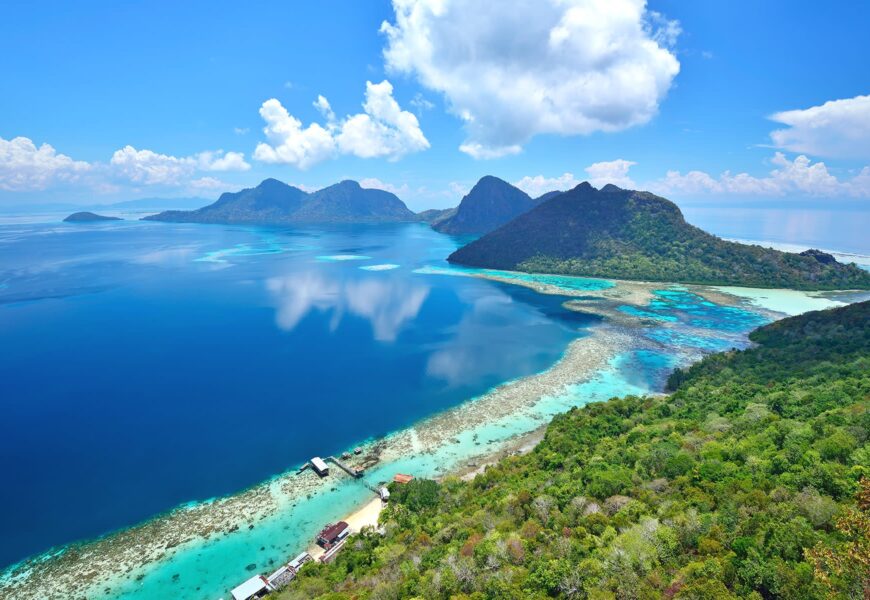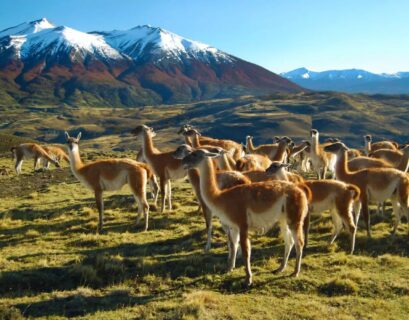Borneo, the third-largest island in the world, is a treasure trove of natural beauty, rich biodiversity, and unique cultural experiences. Split between Malaysia, Indonesia, and Brunei, the Malaysian states of Sabah and Sarawak on Borneo’s northern coast are renowned for their lush rainforests, diverse wildlife, and stunning landscapes. Here’s an introduction to Borneo, Malaysia, highlighting why it’s a must-visit destination for nature lovers and adventurers.
A Haven for Wildlife Enthusiasts
Borneo’s rainforests are some of the oldest in the world, estimated to be around 140 million years old. These ancient forests are home to an astonishing variety of flora and fauna, many of which are found nowhere else on Earth.
Orangutans
Borneo is one of only two places in the world where you can see orangutans in the wild. These intelligent and gentle primates are a major draw for visitors. The Sepilok Orangutan Rehabilitation Centre in Sabah is a fantastic place to observe these magnificent creatures up close and learn about conservation efforts to protect them.
Proboscis Monkeys
Another unique primate found in Borneo is the proboscis monkey, known for its distinctive long nose and potbelly. These monkeys are often spotted along the rivers of Sabah, particularly in the Kinabatangan River area, where they can be seen leaping between trees and foraging for food.
Pygmy Elephants
The Bornean pygmy elephant, the smallest elephant subspecies, is a rare and delightful sight. These elephants are found in the forests of Sabah, and guided wildlife tours offer the best chance to encounter them in their natural habitat.
Diverse Birdlife
Birdwatchers will be thrilled by Borneo’s avian diversity. The island is home to over 600 bird species, including the iconic hornbills, with their striking bills and vibrant plumage. The rainforests and wetlands of Sabah and Sarawak are prime birdwatching locations.
Stunning Natural Landscapes
Borneo’s landscapes are as varied as they are breathtaking, offering a range of activities for outdoor enthusiasts.
Mount Kinabalu
Standing at 13,435 feet, Mount Kinabalu is the highest peak in Southeast Asia and a UNESCO World Heritage Site. The climb to the summit is a challenging but rewarding experience, with hikers treated to stunning views and a diverse range of ecosystems. The mountain’s lower slopes are home to Kinabalu National Park, a biodiversity hotspot with thousands of plant species, including the famous Rafflesia, the world’s largest flower.
Danum Valley
The Danum Valley Conservation Area in Sabah is a pristine rainforest that offers an immersive nature experience. With guided treks, visitors can explore the dense jungle, encounter wildlife, and visit ancient burial sites. The Danum Valley is also home to the luxurious Borneo Rainforest Lodge, providing a comfortable base for exploring the area.
Mulu Caves
Gunung Mulu National Park in Sarawak is another UNESCO World Heritage Site, renowned for its limestone karst formations and extensive cave systems. The Sarawak Chamber, one of the world’s largest underground chambers, and the Deer Cave, famous for its bat exodus at dusk, are must-see attractions. Visitors can also enjoy canopy walks and riverboat trips through the park.
Rich Cultural Heritage
Borneo’s cultural diversity is as rich as its natural beauty. The island is home to numerous indigenous communities, each with its own unique traditions and way of life.
Indigenous Tribes
The Iban, Kadazan-Dusun, and Penan are among the many indigenous groups that call Borneo home. Visitors can experience their cultures through homestays, village visits, and traditional ceremonies. The longhouses, traditional communal dwellings of the Iban people, are particularly fascinating to explore.
Festivals
Borneo’s festivals offer a vibrant glimpse into the island’s cultural life. The Gawai Dayak festival in Sarawak celebrates the rice harvest with music, dance, and feasting, while the Kaamatan festival in Sabah honors the rice spirit with similar festivities. These festivals provide a wonderful opportunity to experience local customs and hospitality.
Adventure and Eco-Tourism
Borneo’s natural wonders make it an ideal destination for adventure and eco-tourism.
Diving and Snorkeling
The waters around Borneo are teeming with marine life, making it a paradise for divers and snorkelers. Sipadan Island, off the coast of Sabah, is one of the world’s top diving destinations, renowned for its vibrant coral reefs, turtles, and schools of barracuda. The nearby islands of Mabul and Kapalai also offer excellent diving opportunities.
River Safaris
River safaris on the Kinabatangan River in Sabah are a fantastic way to see wildlife. Guided boat tours take visitors through the river’s lush floodplains, offering the chance to spot proboscis monkeys, pygmy elephants, and a variety of bird species. Night safaris provide a different perspective, with opportunities to see nocturnal animals and fireflies.
Trekking and Jungle Expeditions
Trekking through Borneo’s rainforests offers an adventurous way to explore the island’s natural beauty. Guided jungle expeditions, such as those in the Maliau Basin, known as Sabah’s “Lost World,” provide an opportunity to discover remote and untouched wilderness areas. These treks often involve camping in the jungle and navigating challenging terrain, offering a true adventure experience.
Conservation Efforts
Borneo’s unique ecosystems face threats from deforestation, palm oil plantations, and climate change. However, significant conservation efforts are underway to protect the island’s biodiversity.
Wildlife Sanctuaries and Rehabilitation Centers
Several wildlife sanctuaries and rehabilitation centers in Borneo work tirelessly to protect endangered species and rehabilitate injured or orphaned animals. The Sepilok Orangutan Rehabilitation Centre, the Bornean Sun Bear Conservation Centre, and the Tabin Wildlife Reserve are examples of successful conservation initiatives.
Sustainable Tourism
Promoting sustainable tourism is key to preserving Borneo’s natural and cultural heritage. Many eco-lodges and tour operators in Borneo adhere to principles of sustainability, ensuring that tourism activities benefit local communities and minimize environmental impact.
Planning Your Visit
When planning a trip to Borneo, consider the best time to visit. The dry season, from March to October, is ideal for outdoor activities and wildlife viewing. However, Borneo’s tropical climate means that rain is always a possibility, so be prepared for varying weather conditions.
Accommodations in Borneo range from luxury eco-lodges and boutique hotels to budget-friendly guesthouses and homestays. Booking in advance is recommended, especially during peak travel seasons.
Conclusion
Borneo, Malaysia, is a destination like no other, offering a unique blend of natural beauty, rich biodiversity, and vibrant cultural experiences. Whether you’re trekking through ancient rainforests, diving in crystal-clear waters, or exploring indigenous traditions, Borneo promises an unforgettable adventure. With its commitment to conservation and sustainable tourism, Borneo invites visitors to discover and appreciate its wonders while helping to preserve them for future generations.









